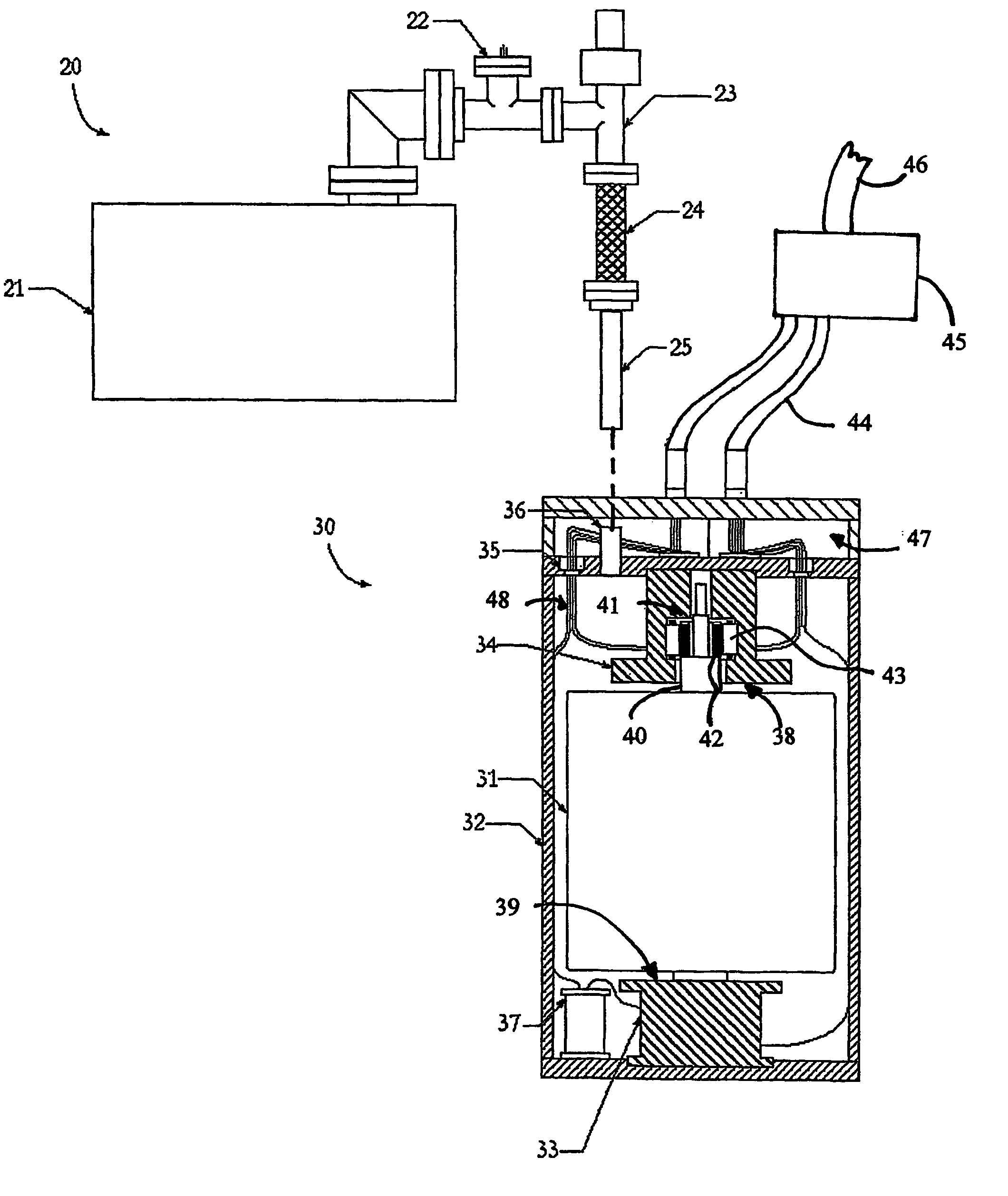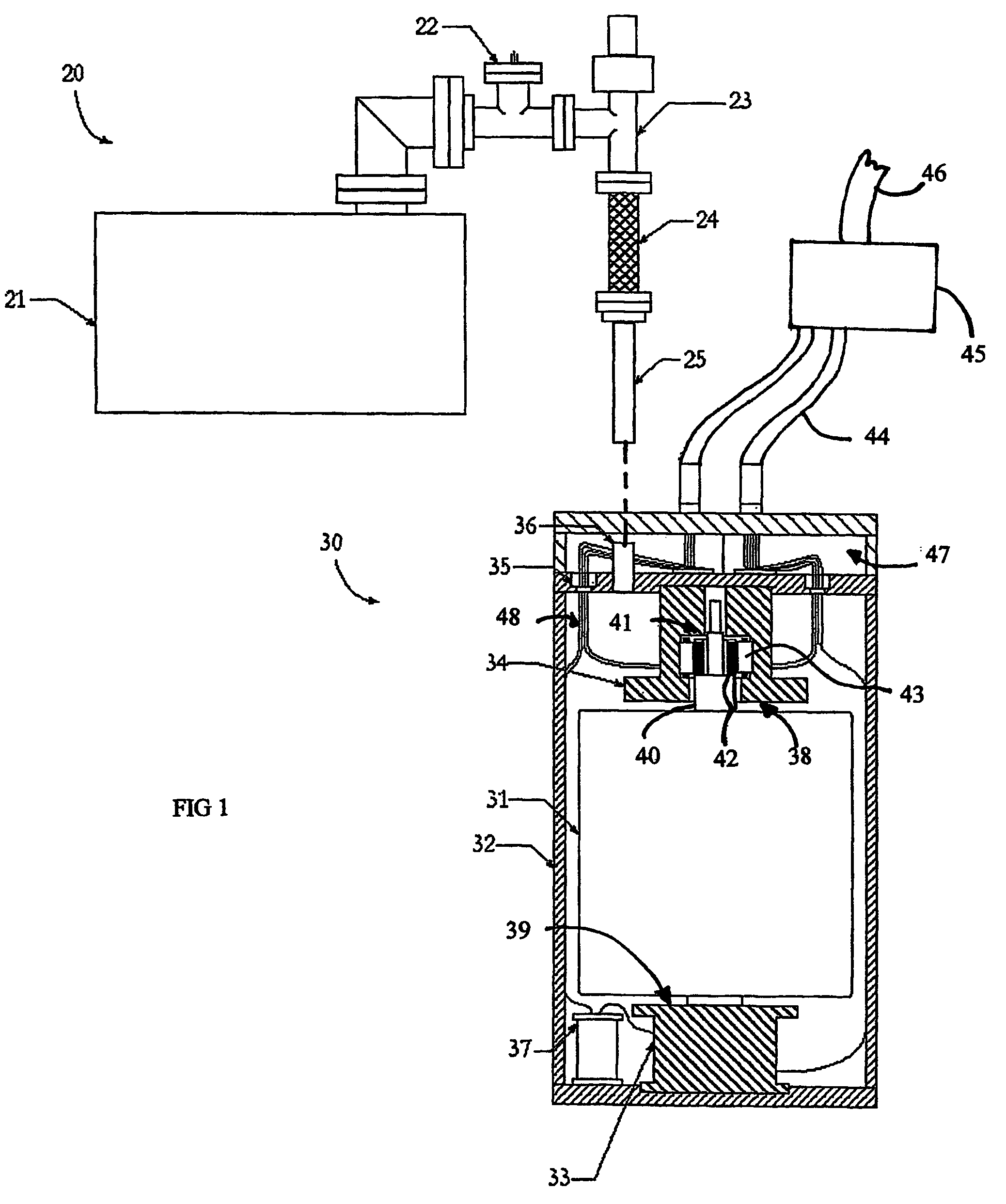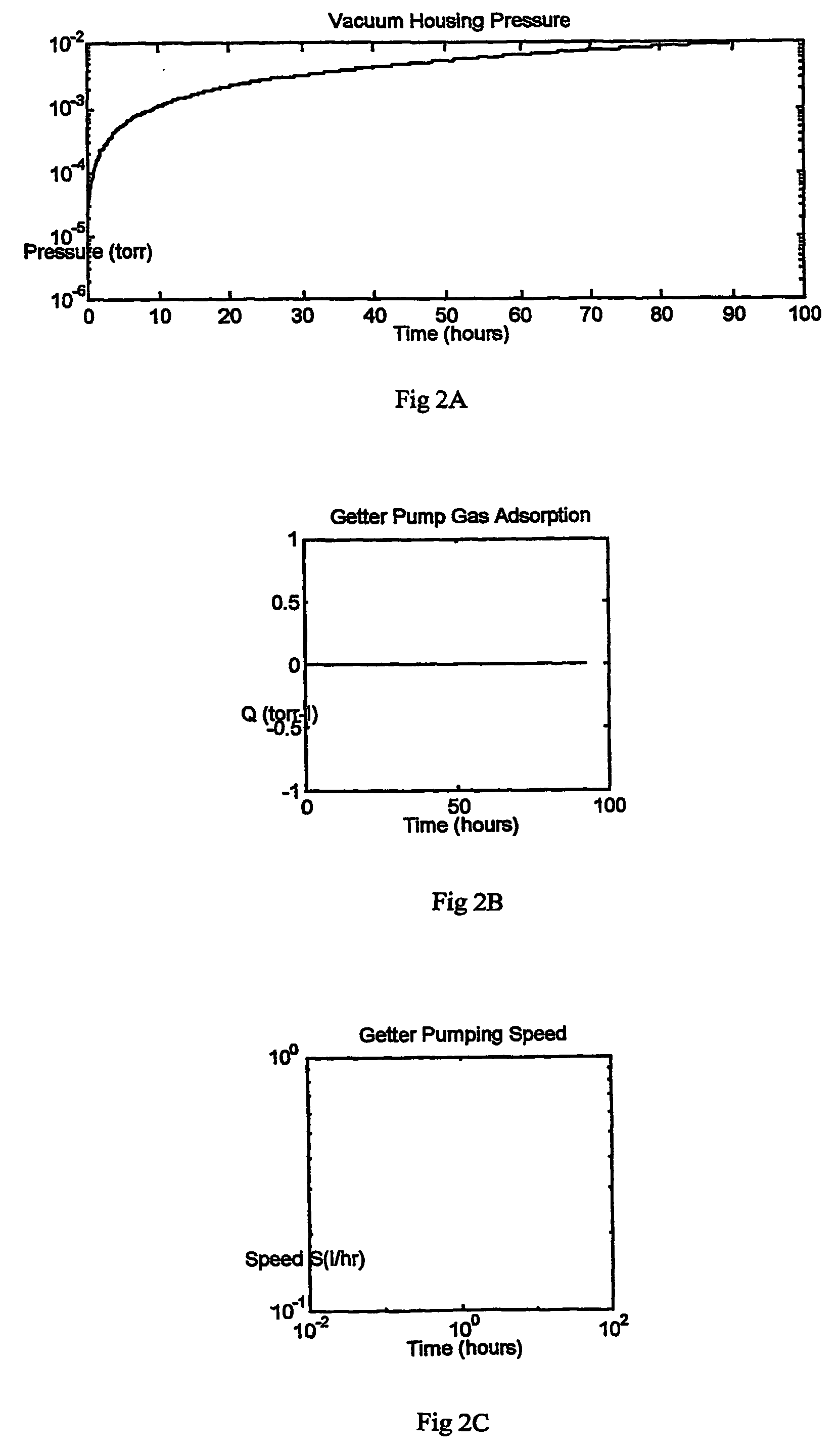Long-life vacuum system for energy storage flywheels
a vacuum system and energy storage technology, applied in the direction of positive displacement liquid engines, electric generator control, machines/engines, etc., can solve the problems of ineffective hydrogen capture of physical type getters, difficult removal of gases by this method, and large quantity and rate of gas evolution, etc., to achieve easy sorbed, high rate, and easy sorbed
- Summary
- Abstract
- Description
- Claims
- Application Information
AI Technical Summary
Benefits of technology
Problems solved by technology
Method used
Image
Examples
Embodiment Construction
[0021]Tuning to the drawings, wherein like reference characters designate identical or corresponding parts, FIG. 1 shows a flywheel power source 30 that has been disconnected from an external initial vacuum-pumping system 20. In accordance with the invention, the flywheel power source 30 uses a steel flywheel 31 that is enclosed inside a metal chamber 32 for storing energy. The flywheel steel is preferably an alloy for high strength and deep hardenability with 4340 being preferred for having relatively good properties at low cost. The chamber is maintained internally at a low pressure for reduction of aerodynamic drag on the flywheel 31. The container 32 can be constructed of steel, stainless steel aluminum or of other metals, however carbon steel is preferred for low cost. Although some prior art flywheel systems have used ‘O’ rings or epoxy bonding to seal the vacuum, the vacuum chamber of the invention is preferably sealed using metal welding, brazing or soldering for lower outga...
PUM
 Login to View More
Login to View More Abstract
Description
Claims
Application Information
 Login to View More
Login to View More - R&D
- Intellectual Property
- Life Sciences
- Materials
- Tech Scout
- Unparalleled Data Quality
- Higher Quality Content
- 60% Fewer Hallucinations
Browse by: Latest US Patents, China's latest patents, Technical Efficacy Thesaurus, Application Domain, Technology Topic, Popular Technical Reports.
© 2025 PatSnap. All rights reserved.Legal|Privacy policy|Modern Slavery Act Transparency Statement|Sitemap|About US| Contact US: help@patsnap.com



